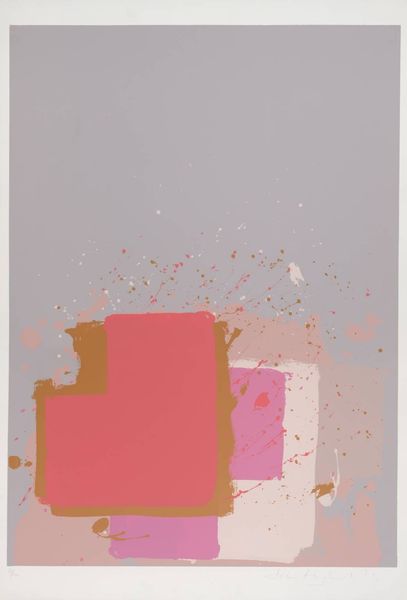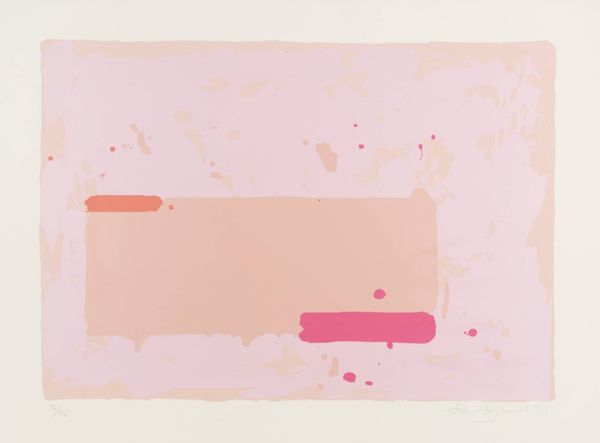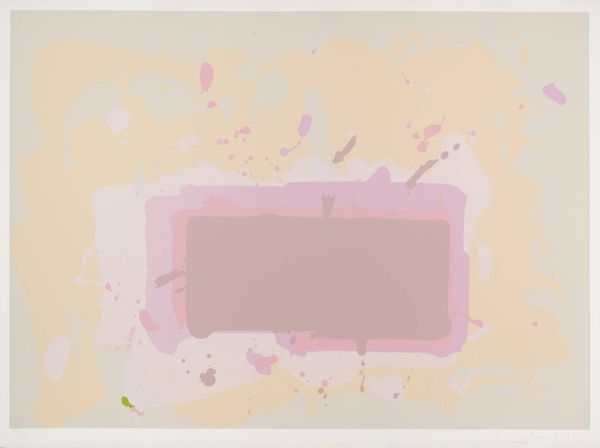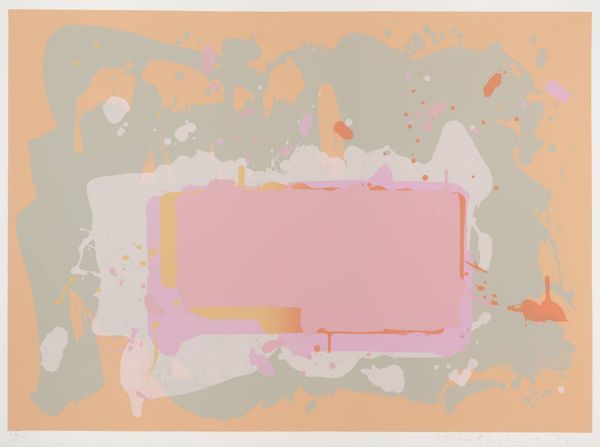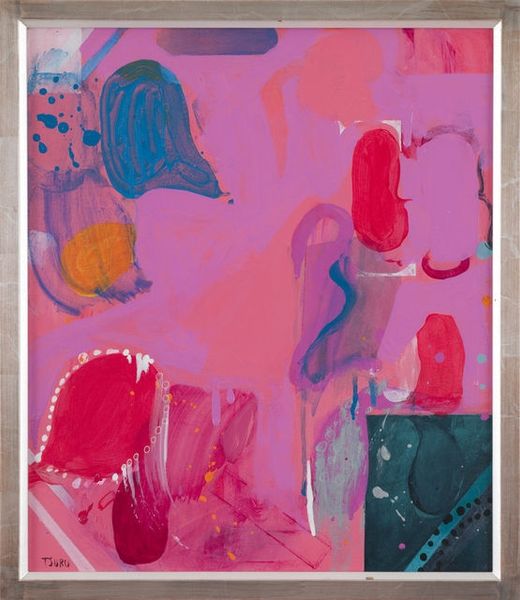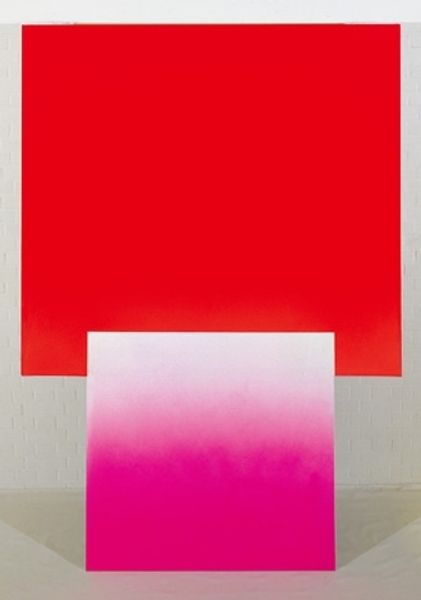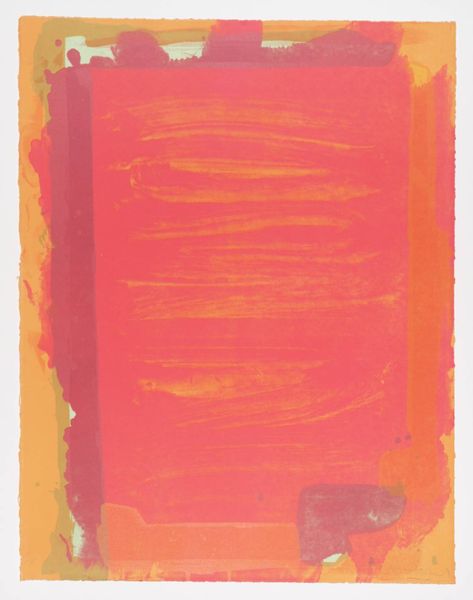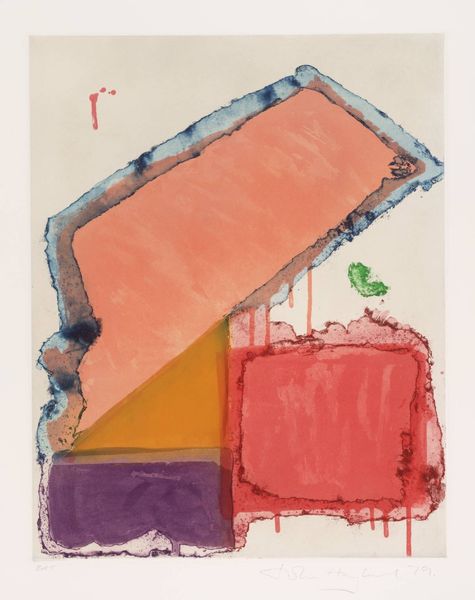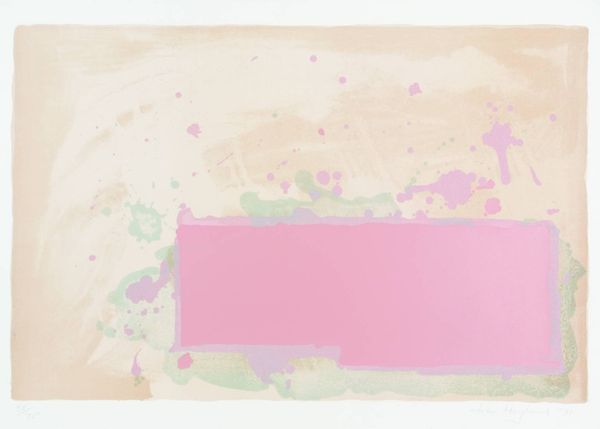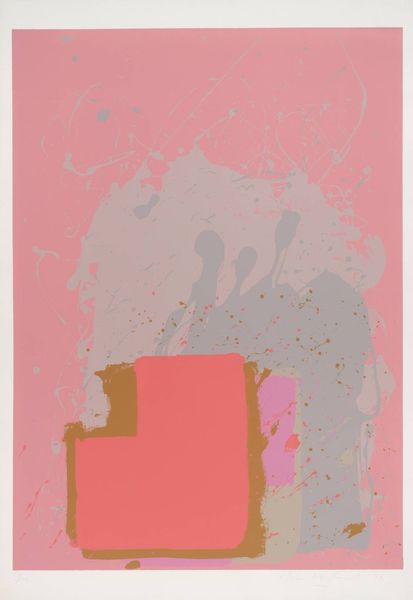
Copyright: John Hoyland,Fair Use
Curator: What strikes you immediately about John Hoyland’s “Brown Black on Pink” from 1971? Editor: An assertive sense of layering! Those distinct rectangles command the foreground against what would otherwise be a saccharine pink backdrop. The splatters feel primal against those clean shapes. Curator: That layering is so key! Hoyland, within the Color Field movement, was radically invested in surface. Note how he thins the acrylic, staining the canvas itself and refusing the illusion of depth. This collapse of foreground and background challenged traditional hierarchies within painting. Editor: Yes, there's an undeniable flatness. The brown and black aren't merely colors; they operate as potent symbols. Brown connects us to earth, to primal origins, while the black hints at the void. How do those intersect with the gendered implications of this very particular shade of pink? Is this a subversion of stereotypical femininity through the juxtaposition with darker, more grounded tones? Curator: Absolutely! That interplay allows us to destabilize conventional readings of both color and form. And by using these large, blocky forms and disrupting their neatness with expressive splatters, he might question systems of categorization. Color Field can be read in relation to Minimalism, after all, where geometry serves to interrogate structures. Editor: The symbolism feels almost defiant in its ambiguity, defying one single meaning. Is there any insight from the artist himself about it? Curator: Hoyland was quite committed to letting the artwork speak for itself. He saw the act of painting as fundamentally about discovery. It seems that we can't escape the associations inherent in these colours and forms. The splashes undermine this painting from feeling too formally constrained. Editor: Agreed. The more you consider, the more this piece unravels fixed interpretations. It resists any straightforward definition, remaining dynamic and open. Curator: It's a testament to Hoyland's dedication to the experiential and, crucially, to the disruption of expectation. Editor: Indeed. There's something universally felt about this. It will stay with you.
Comments
No comments
Be the first to comment and join the conversation on the ultimate creative platform.
